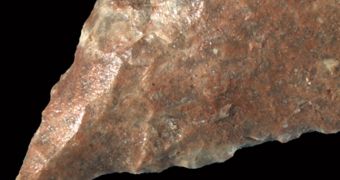A technique for creating spearheads that was previously believed to be only 20,000 years old was in a new study demonstrated to have existed at least 75,000 years ago in southern Africa.
Early humans living in the area were capable of creating thin, sharp spearheads out of heated stone a long time before researchers starting given them credit for.
In a new scientific paper, experts in charge of this investigation propose that the early humans who lived in Africa had a very diverse repertoire of techniques for creating various tools, even if they were used sporadically.
The scientists also believe that these skills also made it easier for humans to leave Africa during migrations that started some 60,000 years ago, by allowing them to adapt to whatever materials they found in the areas they settled anew.
Recent data suggests that the technique called pressure flaking was part of this repertoire that early humans used before settling other continents, Science News reports.
The new study, details of which appear in the latest issue of the top journal Science, was conducted by French archaeologist Vincent Mourre, who is based at the University of Toulouse-Le Mirail.
Until now, experts believed that most manifestations of human cultural behavior appeared after Europe was settled, some 50,000 years ago. It was then that the earliest cave paintings and artifacts were made.
But the new data support an alternative theory, which proposes that rituals, symbolic art and some tools developed gradually over thousands of years, and not in short bursts.
The new study was conducted in the Blombos Cave of South Africa, where experts dug up sediment samples spanning back more than 75,000 years.
A number of stone artifacts that may have been produced through pressure flaking where discovered.
“The Blombos evidence for pressure flaking is the oldest we know,” explains University of Colorado in Boulder (UCB) Museum of Natural History anthropologist and study coauthor Paola Villa.
Other experts say that, while the new findings are indeed intriguing, more evidence is needed to support them before more researchers get on board with the idea.
“If the authors are correct that pressure flaking occurred at Blombos Cave, the result is important in that that it extends the time range of the technique,” says archaeologist Curtis Marean.
“But it’s not game-changing in our understanding of the origins of complex cognition,” adds the expert, who is based at the Arizona State University in Tempe.

 14 DAY TRIAL //
14 DAY TRIAL //